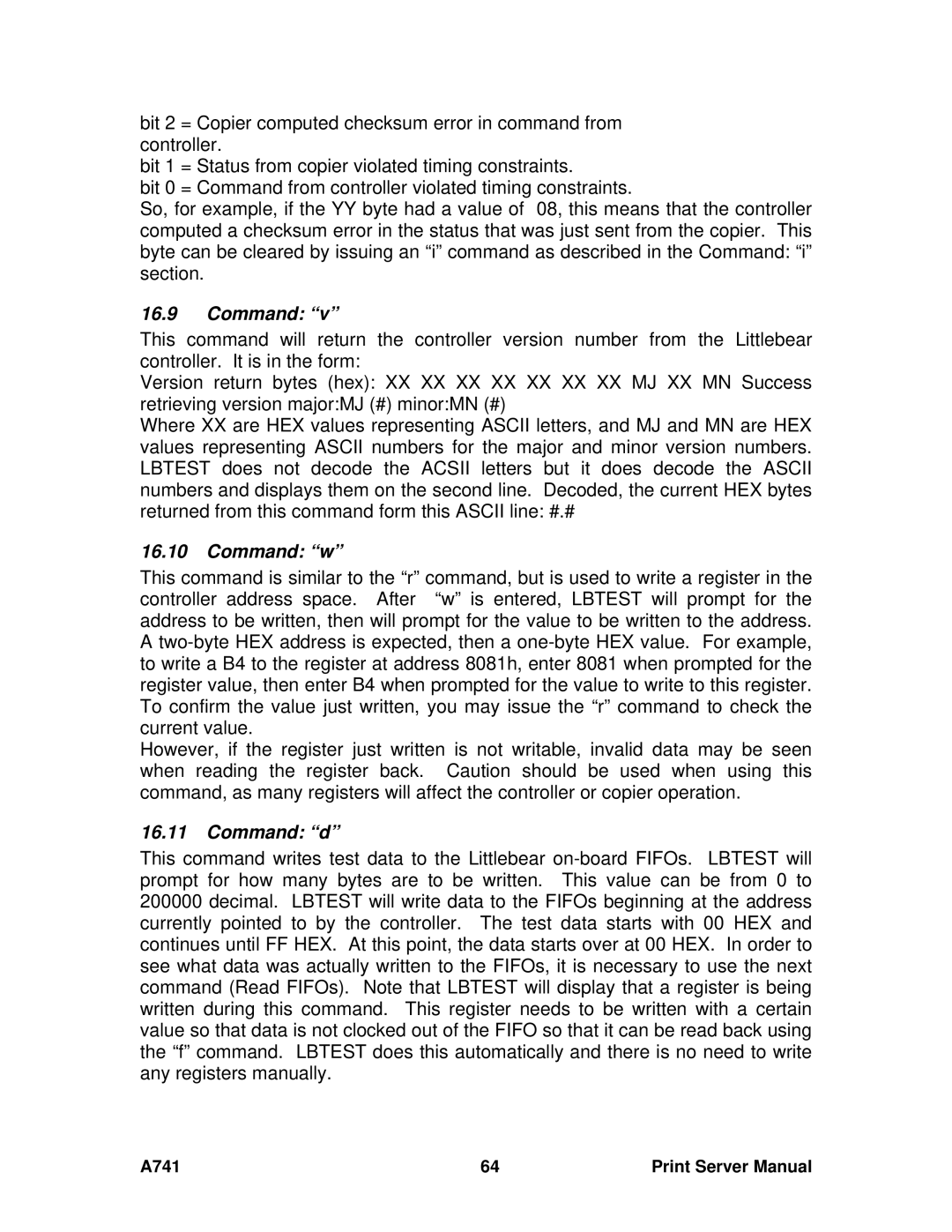bit 2 = Copier computed checksum error in command from controller.
bit 1 = Status from copier violated timing constraints.
bit 0 = Command from controller violated timing constraints.
So, for example, if the YY byte had a value of 08, this means that the controller computed a checksum error in the status that was just sent from the copier. This byte can be cleared by issuing an “i” command as described in the Command: “i” section.
16.9Command: “v”
This command will return the controller version number from the Littlebear controller. It is in the form:
Version return bytes (hex): XX XX XX XX XX XX XX MJ XX MN Success retrieving version major:MJ (#) minor:MN (#)
Where XX are HEX values representing ASCII letters, and MJ and MN are HEX values representing ASCII numbers for the major and minor version numbers. LBTEST does not decode the ACSII letters but it does decode the ASCII numbers and displays them on the second line. Decoded, the current HEX bytes returned from this command form this ASCII line: #.#
16.10Command: “w”
This command is similar to the “r” command, but is used to write a register in the controller address space. After “w” is entered, LBTEST will prompt for the address to be written, then will prompt for the value to be written to the address. A
However, if the register just written is not writable, invalid data may be seen when reading the register back. Caution should be used when using this command, as many registers will affect the controller or copier operation.
16.11Command: “d”
This command writes test data to the Littlebear
A741 | 64 | Print Server Manual |
